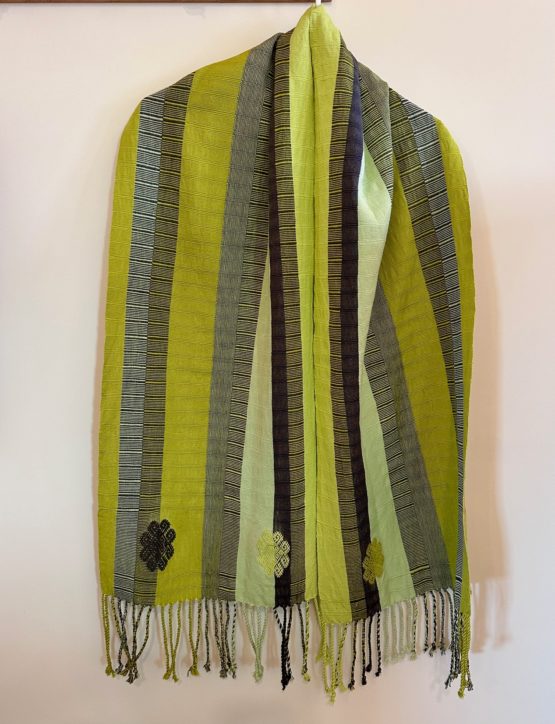I bet you thought I disappeared! This is my first post since returning to Teotitlan de Valle, Oaxaca, a week ago.
Happy Thanksgiving, Everyone!
I came back to my casita filled with aromas created by professional cook Kalisa Wells, who has been house sitting my two adopted street dogs. All kitchen surfaces were covered with culinary ingredients. It was a sight to behold.

A cook’s kitchen, filled with every imaginable local chile variety, herbs, spices
And, then, Thanksgiving was a mere four days later.

Cuni Cuni Guajalote. Yummy Yummy.
From Durham, North Carolina and via Facebook, I ordered organic turkey raised in the Mixteca region of Oaxaca from Cuni Cuni Guajalote before I left. This took some sleuthing, hunting down their whereabouts via the Facebook group Clandestine Oaxaca Appreciation Society — the source for everything Oaxaca.

La dueña de Cuni Cuni — Araceli Jimenez
As it turns out, we decided on two smaller birds instead of a 9 kilo (20 pounder) when we did the pick up at La Cosecha organic market at Macedonio Alcala #806 — enough to feed a crowd that kept expanding beyond local family and intimate friends as I settled back in to village life. We were worried about one big turkey fitting into a basic gas oven.

Merry, Kalisa and Rosario with preparations underway
It was the roasting pan and rack that had us stymied. Neither of us brought a sturdy vessel or rack from the USA and the only thing we could find were flimsy aluminum, so we bought three and stacked them. There were no racks to be found as I cruised the aisles of the super mercado.

Kalisa’s Camote (Oaxaca sweet potato) Pie with the flakiest pastry crust
My eyes lit on a stainless steel dish drainer. Sure, it had those upright racks to hold the dishes vertical and immovable tall sides. I bet my friend Arnulfo and I could figure out a way to modify this, I said to myself. Into the cart it went.
And, here’s how it turned out.

Flattened, cut dish drainer. Be sure to remove plastic feet!
One of the great pleasures of being in Mexico is that we learn to innovate, modify, imagine and manifest. Things we need don’t always come easily, but there seems to be a way to improvise and make it work. I have learned this from my Mexican friends who are masters at adaptation.

Friends and family enjoying Thanksgiving dinner on the patio
And, if you live in Oaxaca, I encourage you to think about ordering your Christmas turkey from Cuni Cuni Guajalote. You will love it. Expensive? Yes. Worth it? Yes. This is NOT your Sam’s Club or Walmart frozen commercial turkey.

Organic beet hummus appetizer — veggies from Tlacolula market
How we roasted the turkey!
Kalisa loves butter. I found the local dairy-cheese man from the Teotitlan del Valle market and bought up all the butter he had. Probably five pounds. Kali coated the turkeys in butter, stuffed them with oranges, rosemary, apple peels (no pits), celery and carrot ends, covered the turkey with foil and put it into a hot 450F degree oven for about 20 minutes. Then she lowered the heat to 350 degrees Fahrenheit and continued to roast covered at 18 minutes per pound until the drumsticks wiggled easily and the juices ran clear. We didn’t have a meat thermometer. We were also cooking at 6,000 feet altitude using an oven with Centigrade settings, so we converted everything.

Jacki’s family sweet potato recipe
- 300F = 149C
- 350F = 176C
- 400F = 204C
- 425F = 218C
- 450F = 232C
We needed this conversion for the camote and apple pies, too. But had to jack up the heat because we are running off a propane tank at a higher altitude. So, it was check, check again, triple check.

Thanksgiving buffet feast.
NOTE: We did not stuff the turkey because this is the most common culprit for botulism. The turkey must be completely thawed and at room temperature to be stuffed and cooked successfully without risk of infection. Many people stuff a partially thawed turkey (oh, it’s just a little cold in there, it’s okay) and the inside becomes an incubator for the bacteria.

An array of artisanal mezcal
Everyone who came brought something to contribute: mashed potatoes, cranberries, Boulanc rolls, salad, organic black beans, tortillas made with local field corn, chocolate, wine, beer, mezcal. Yes, I smuggled fresh cranberries from Whole Foods but Jacki found them locally.


Setting the table, Teotitlan del Valle.
Earlier in the week, Kali and I made a visit to Macrina Mateo Martinez in San Marcos Tlapazola to get large platters that would serve as pie pans and some extra dinner plates. They are my go-to family women’s cooperative for fine barro rojo that those of us who live here love to use.

Mama Dorothy’s Apple Pie baked in a barro rojo plate
I’m very happy to be back in the village, surrounded by mountains, warmed by the sun, a hammock on my rooftop handwoven by the daughter-in-law of Mitla’s Arturo Hernandez. Despite the barking dogs and crawling critters, I am now embracing a slower pace of life — for the moment. Tours and workshops start up in mid-December!
Feliz Fiestas, amigos.
Like this:
Like Loading...




































Rosca de Reyes and Three Kings Day in Oaxaca
Here in Oaxaca the tradition is to celebrate Three Kings Day, Dia de los Reyes, January 6, with gift-giving to the children. Godparents visit the homes of godchildren, godchildren come to the homes of godparents.
Rosca de Reyes topped with candied fruits, stuffed with plastic Baby Jesus
They will present a Rosca de Reyes, that translates to wreath of the kings. They sit down to a cup of steaming, frothy hot chocolate, locally made, tear off a piece of Rosca, dunk, sip and eat.
Hard to tell what’s under wraps here.
Surprise, the sweet egg bread covered in candied fruit, is stuffed with little plastic Baby Jesus dolls. Whomever gets one in their piece of bread gets to host the Candlemas party on February 2, forty days after Jesus’ birthday. There will be a lot of parties around here. The dolls are plentiful. Forty is a magic number.
A gift-wrapped Rosca de Reyes, Mexico’s colors
Is this Mexican Christmas? Three Kings Day occurs twelve days after December 25, when the astronomers, called Magi, gave gifts to honor the birth of Jesus.
A stack of Rosca de Reyes, simpler version, still yummy.
Mexico has an amazing cycle of festivals occurring with regularity around the calendar, moving from one season to the next, opening and closing Christmas, moving into the Easter season with Lent and Carnival. It seems that there is not a week of respite here.
Another version of Rosca de Reyes, topped with a sugar dough crust
This is a country of celebration.
Today in the Teotitlan del Valle market, bakers of Rosca de Reyes proudly displayed their artisanry. They came from here, from Tlacolula and from Santo Domingo near Tule. Some gave out samples to lure customers. It worked for me.
By 10:30 a.m. almost all the Rosca’s were sold out and bakers folded up their tablecloths. The best, made with egg bread, called pan de yema, went first.
Selling Rosca de Reyes in the Teotitlan del Valle market. This is a BIG ONE.
The bread makes a great gift, if I don’t eat it all! And at 30 pesos each for a small one, it’s a real value. That’s about $1.50 USD for handmade edibles.
Tortilla sellers in the open air Teotitlan market
Toy and clothing sellers filled the market, too. Many were families visiting from the USA who bring things to sell to help cover their travel expenses.
Berta selling ingredients for Sopa de Guias
Sopa de guias, squash vine, squash blossom, squash and corn soup, is a specialty this time of year, too. All the ingredients are available at various stalls.
Fresh greens are an essential part of the diet here.
Some of the ladies bring their produce from the town of Benito Juarez, high on the mountain about an hour from here. They lay out their blankets, top them with produce, and sit, shucking corn and cutting vines.
Teotitlan del Valle Iglesia Preciosa Sangre de Cristo
It’s warm here now. Daytime temperatures are in the low 70’s Fahrenheit, and it dips down to about 48 degrees at night. Skies are clear blue. It’s a perfect place to be in winter. Please visit us.
Like this:
5 Comments
Posted in Cultural Commentary, Food & Recipes, Teotitlan del Valle
Tagged Christmas, Dia de Tres Reyes, Kings Bread, Mexico, Oaxaca, Rosca de Reyes, Teotitlan del Valle, Three Kings Day